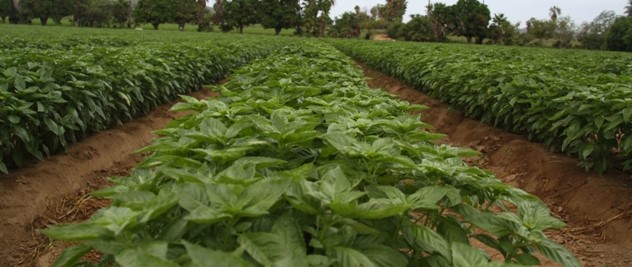
By Fredrique Achieng’
A single mint plant can be harvested up to three to four times in a season and can offer farmers a constant source of income every month.
In Kenya, the most common varieties are Apple Mint, Pineapple Mint, Corsican Mint, Peppermint, Citrus Mint, and Spearmint.
All of these types of mint can grow easily anywhere, from open field, to greenhouse, or even in a pot in the kitchen. But experts recommend not to expose mint to too much sunlight as this can scorch the plant.
The herb can be grown from seed or propagated as cuttings. The quickest way to grow it is through propagation since the root develops and is ready to be planted into the ground or pot in 10 to 15 days.
To propagate, cut a 10cm stem about 1cm above the first branch, as this will make it easy for another branch to develop on the existing plant. Place the stem in a 250ml jar or bottle with water and cut away the lower leaves so as to prevent your root from rotting. After a week, the root should have developed, but wait another week to enable it to grow to a decent length and size, changing the water after each four to five days.
Related News: Laikipia farmer switches half-acre to Sh200k-a-month mint farming
Once the root has developed to create a mini-plant, transplant it to a pot or directly to the soil. To transplant it into a pot, use a pot of 13cm diameter. This size carries 10-15 seedlings. To transplant into the soil directly plant the seedlings at a distance of 15cm from each other to give them enough space to grow.
Since mint is an invasive plant, it can work better to grow it into a pot that can be placed underground - to avoid its roots from spreading to unwanted areas.
For the herb to be fruitful it needs to be planted in a soil with a ph. of 6-7 that is constantly moist, which can be achieved by watering the plant at least twice a week and having mulch covers the soil surface.
Additionally, trim the plant, which encourages the plant to grow and spread out horizontally, producing more branches and leaves per plant.
Due to its strong scent, the plant is rarely attacked by pest and diseases, but the most common pests are root borers, spider mites, or root weevils.
Related News: Kenyan mint farmers set to double their export as peak season starts
Harvesting the plants could start 90 days from the day of planting. This is done by picking off the leaves. While harvesting, it is recommended not to pick more than a third of the leaves, this will help the plant regrow faster for the next harvesting.
Mint seedlings can be bought from Asepsis 0792764947
















Comments powered by CComment